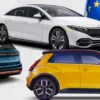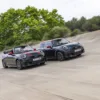In 2024, we hardly expected some automotive stars, but they left me completely cold. Although many motoring journalists have hailed them as the pinnacle of innovation and design, I find nothing but disappointment with these three cars. Perhaps many will disagree, but these are the models - the cars of 2024 that fail to live up to high expectations and are, in my opinion, over-hyped and, in fact, despite all the hype, a bad choice.
3 Cars in 2024 That Completely Disappointed Me? Sometimes it happens that the automotive industry really throws all the cards on the table and promises a future on four wheels. "This is the year of automotive revolutions!" they shout, "Year of new stars!" But then comes the truth. I arrive for the test, I go to the salon to take a look, I sit behind the wheel - and all I think is: "Well, this can't be serious." And this year, dear readers, we have some real gems on the "what went horribly wrong" list.
Let me introduce you three cars, which most of my fellow journalists called "top achievements". He is the first Dacia Duster – once an affordable, robust off-roader, but now an overpriced sheet metal without basic safety (again). The other is the Renault 5 EV, which has been advertised as a modern electric car for the masses, but in reality is so slow to charge that you're more likely to be escorted to your destination by snails - the much-hyped €25,000 difference. And finally – my favorite worst – Mini Aceman. A car that's a Mini in name only, but otherwise so heavy and mediocre that it could easily be mistaken for a random crossover from China. If only the Chinese didn't make electric cars that are simply better.
So, if you like the concept of getting less performance for your money, more frustration, and feeling like you've been "squeezed" a bit by the manufacturer... read on!
1. Dacia Duster 2024
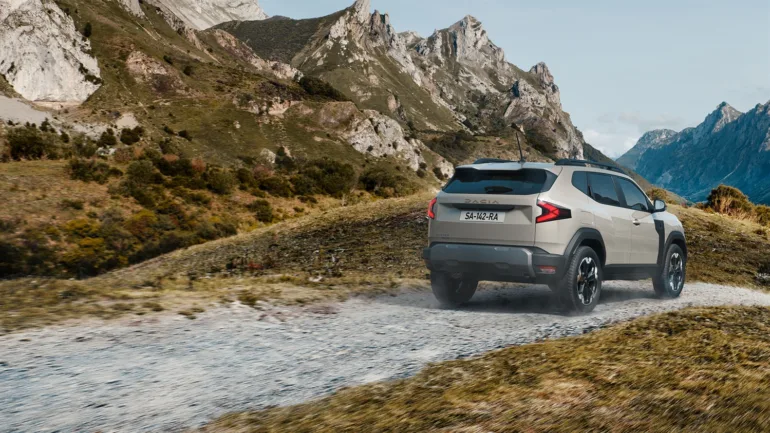
"An affordable SUV, but it does not meet basic expectations in terms of safety and equipment."
In recent years, Dacia has become similar to Skoda at Volkswagen - a brand that builds on proven components and offers affordable models for practical buyers. Duster has always been popular as a robust and easy SUV that handles the terrain with ease. However, this year's model suffers from a number of shortcomings that simply do not justify its price. Although everyone convinces you otherwise.
Problems:
- Security: Security is one of the biggest issues. The new Duster scored only in Euro NCAP tests three stars, which is embarrassing for 2024. A family SUV that does not meet basic safety standards simply cannot be competitive. Although Renault is historically known for excellent safety ratings, Dacia has been lagging behind for years.
- Price and equipment: The most basic version with four-wheel drive and the middle trim level now costs around 25.000 € (approx 26.500 $). At this price, you would at least expect a reversing camera, which is still not standard equipment on the Duster. Additionally, the plastics inside feel cheap and questionable in terms of long-term durability. The cheapest Duster (for around 19,000 euros - the kind for a normal price - doesn't even have an LCD infotainment screen. What year are we in?! We "discontinued" the screen that costs 100 euros at the expense of - what?! That people buy the one for 23,000 euros , which has two or three more things among the equipment.
- Spartan interior: The spartanness of the Duster was once even an advantage, as the car was robust and easy to maintain. However, the new model has reached a point where the interior already feels excessively "bare". Plastics and materials are not durable, but they work cheaply. I'm talking about that "sustainability" in the long run. When a car looks good for a really long time. The plastic is dry and not greasy - those who know what I'm talking about will know the difference between durable and less durable plastic.
Conclusion: The new Duster is no longer the affordable choice that was popular with adventurers. It's now too expensive for what it offers and still falls behind in key areas like safety and equipment. The reversing camera is a module worth a few euros and is not science fiction. In the case of a model for around 25,000, it is necessary. It isn't... that's the problem. The car is also too expensive because of such nonsense. So "savings" at completely wrong ends.
2. Renault 5 EV 2024
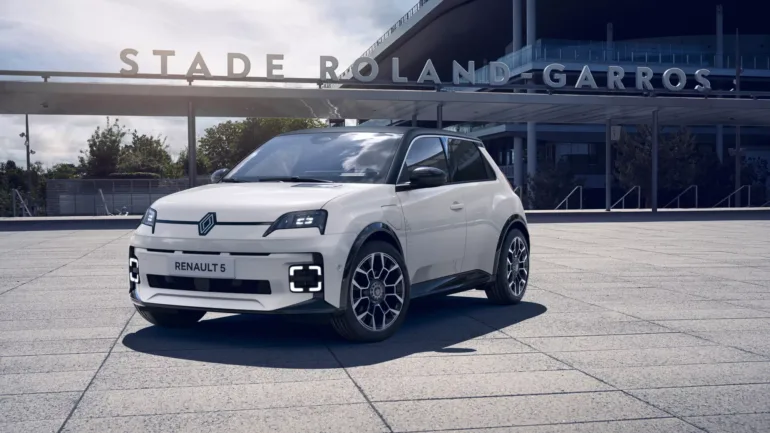
"A cult revival that turns out to be an electric city car with too many compromises."
With the Megane e-Tech model, Renault has shown that it knows how to make an excellent electric car that competes with the best European electric cars. Therefore, I eagerly awaited the revival of the Renault 5 in an electric version. But the new Renault 5 EV disappoints with a number of limitations that reduce its usefulness.
Problems:
- AC charging too slow: Renault 5 EV supports only 11 kW AC charging, which is insufficient for a city car that should be able to quickly top up the battery at public city charging stations. 22 kW would be ideal, as it would allow charging the 52 kWh battery in about two and a half hours, which is quite acceptable for city driving.
- Limited range: With a 52 kWh battery, the Renault 5 EV doesn't offer enough range to be the only family car. The real range when driving on the highway is well below 300 km, which limits its applicability to urban environments and shorter journeys. Competitors already offer larger batteries and greater usability for a comparable price.
- Basic model without DC fast charging: The most basic version with a 40 kWh battery and 95 hp is affordable (approx 25.000 € or 26.500 $), but without the possibility of fast DC charging. This means that urban users who do not have their own charging station at home cannot charge their car quickly. Renault promises an "electric car under €25,000" with it, but this is not really a car that would meet the needs of the average user.
- Not enough space on the back bench. Okay – Renault! This is supposed to be a car for mothers who drive their orthotics in "shells" and bulky child seats on the back seats. It's going to be really tight. At the same time, the car will very quickly exceed the value of 30,000 euros, and it will be really difficult for 4 adults to drive in it. How did you come up with this. Bad - to be honest. In the case of electricity, these 5 cm would be easily obtained, even with, for example, a movable rear seat or some other "trick". Renault 5 does not have a "frunk" for cables and a similar pattern that occupies the space of the trunk.
- Fast charging…seriously?! In 2024, we offer a maximum speed of 100 kWh for the "most expensive" version! You're kidding me. Or rather. Competition at these amounts, approx 35.000 € offers 160 kWh.
Conclusion: The Renault 5 EV is a disappointment to me because it falls short of the standards the brand has set with the Megane e-Tech. Due to the limited range and slow charging, it loses its usefulness and it is difficult to justify its price. "Realno" is the cheapest version for 35.000 € completely useless, as it is charged without fast charging and, to be honest, the battery is too small. The back bench is a "disaster". A car that will directly compete with the ID.3, but is much less useful in comparison. For all the problems the Renault 5 has - really - it's still a decent car if you're only going to use it as a second or third car, but it doesn't have much utility as a first car. In any case, it deserves a full 5 for design and evoking emotions, although this does not mean that you should look away from the mistakes it has. However, Renault knows how to make "good" electric cars.
3. Mini Aceman 2024
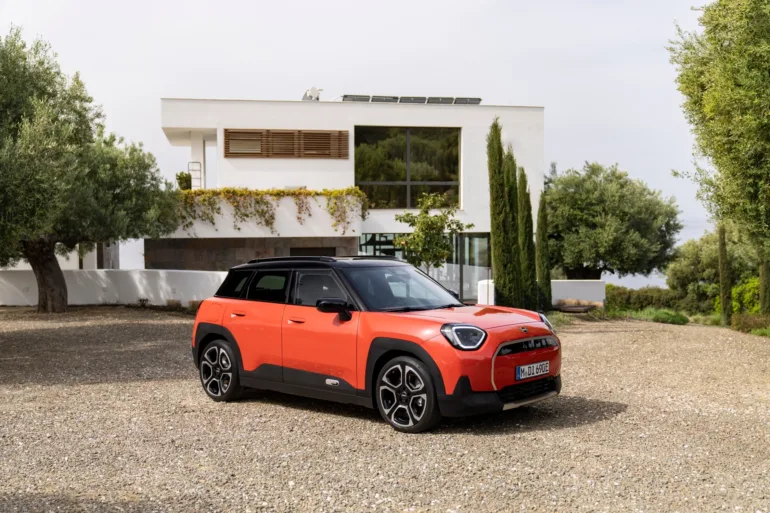
"A big and heavy Mini that no longer has any real 'Mini' character."
The Mini Aceman 2024 is the brand's first fully electric crossover, which should combine utility and unique Mini design. It looked promising on paper, but in practice it shows all the signs that BMW (which owns the Mini) is losing touch with the essence of what the Mini is supposed to be.
Problems:
- Loss of identity: The Mini Aceman is heavy and large, which means it loses what makes the Mini attractive - agility and compact dimensions. The Aceman with a larger battery weighs just 1,785 kg, which is simply too much for a small electric car.
- Limited range and charging: It comes with two battery sizes (38.5 kWh and 49 kWh), but the larger battery only offers approx 230 km of real range on the highway. The car only supports up to 95 kW DC fast charging, while AC charging is limited to 11kW – disappointing for a vehicle of this price.
- Price: The SE model, which has a larger battery, starts at approx 40.000 € (approx 42.500 $). The Mini has always commanded premium prices, but this model doesn't justify that price given the limited performance and high cost of extras for basic functionality. The competition offers much better electric crossovers for the money.
- Power: 208 horses for an electric car weighing almost 1,800 kg? All of you who follow the numbers will understand that he lacks 70 horses.
Conclusion: The Mini Aceman sells on the basis of the name, but it no longer offers what buyers expect from a Mini. Heavy, expensive and without real range - this is a model that has already been run over by all the competition, if BMW does not rethink its strategy, it will be in Chinese hands for three years. Maybe that's even better. Because it's a shame to watch this torture. BMW is the only one of the holy German trio that, since the i3 model, which is still the best EV of this brand, has not produced an exclusive platform for electrics and is doing some kind of crossover between the drives. This is also why such "quicks" like the ones we see today exist.
Conclusion
2024 has brought some truly exciting automotive innovations, but also some disappointments, proving that some manufacturers still rely on the power of a name instead of quality and much-needed progress. Dacia Duster, Renault 5 EV and Mini Aceman are three models that left me cold and disappointed. At the same time, they show that European industry is on the verge of collapse. The question arises: do manufacturers even listen to the needs of their customers or just follow trends, regardless of the user experience? The problem I see time and time again is that in the EU, engineers and developers do not drive their cars and therefore do not understand the problems of consumers. They are simply not e-mobility users.
This record was created after the experiences I gathered in the last week and I have to admit that I changed my opinion a lot when I was able to "physically" evaluate something. However, the automotive industry is adept at covering up its weak points.

